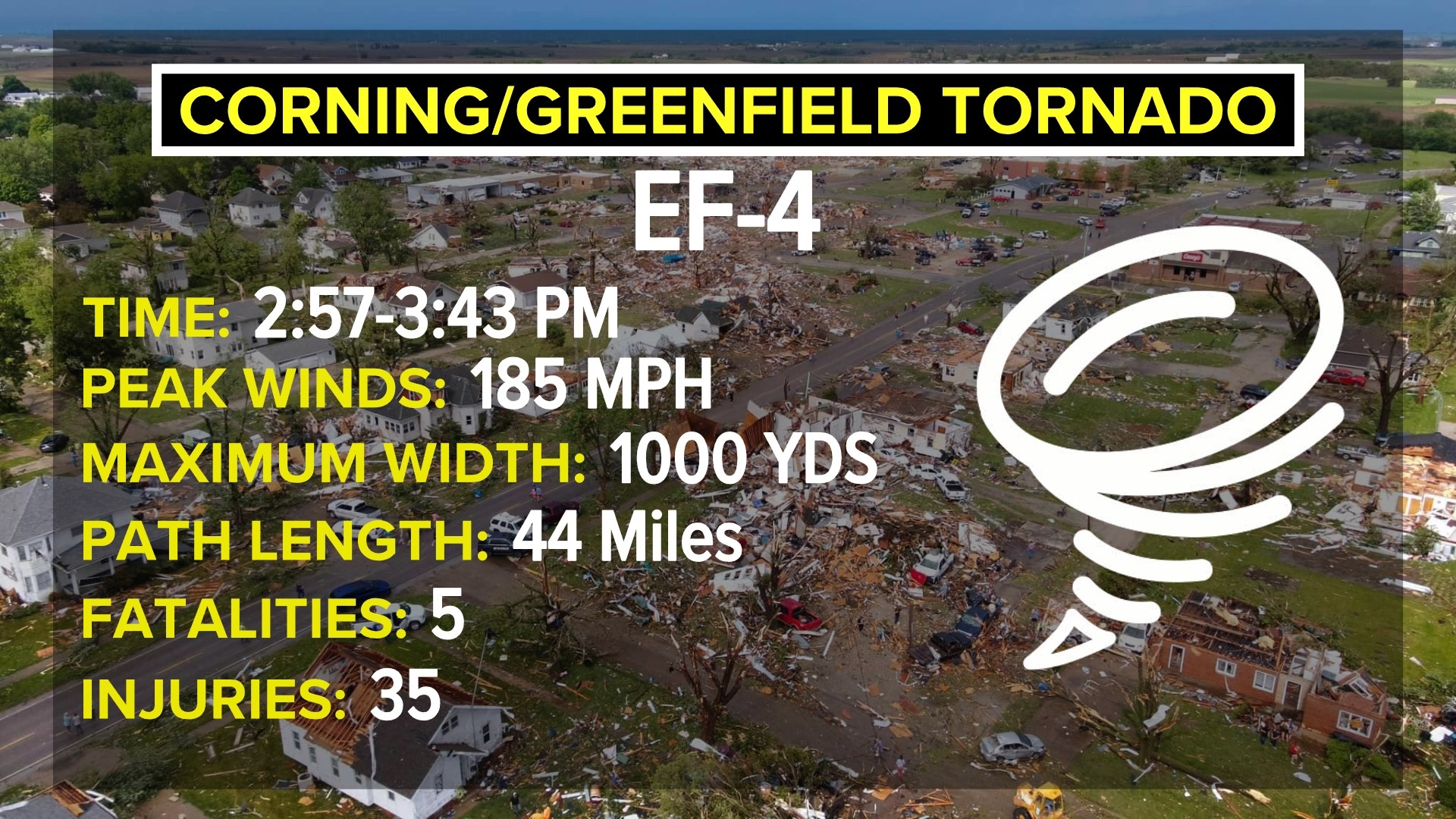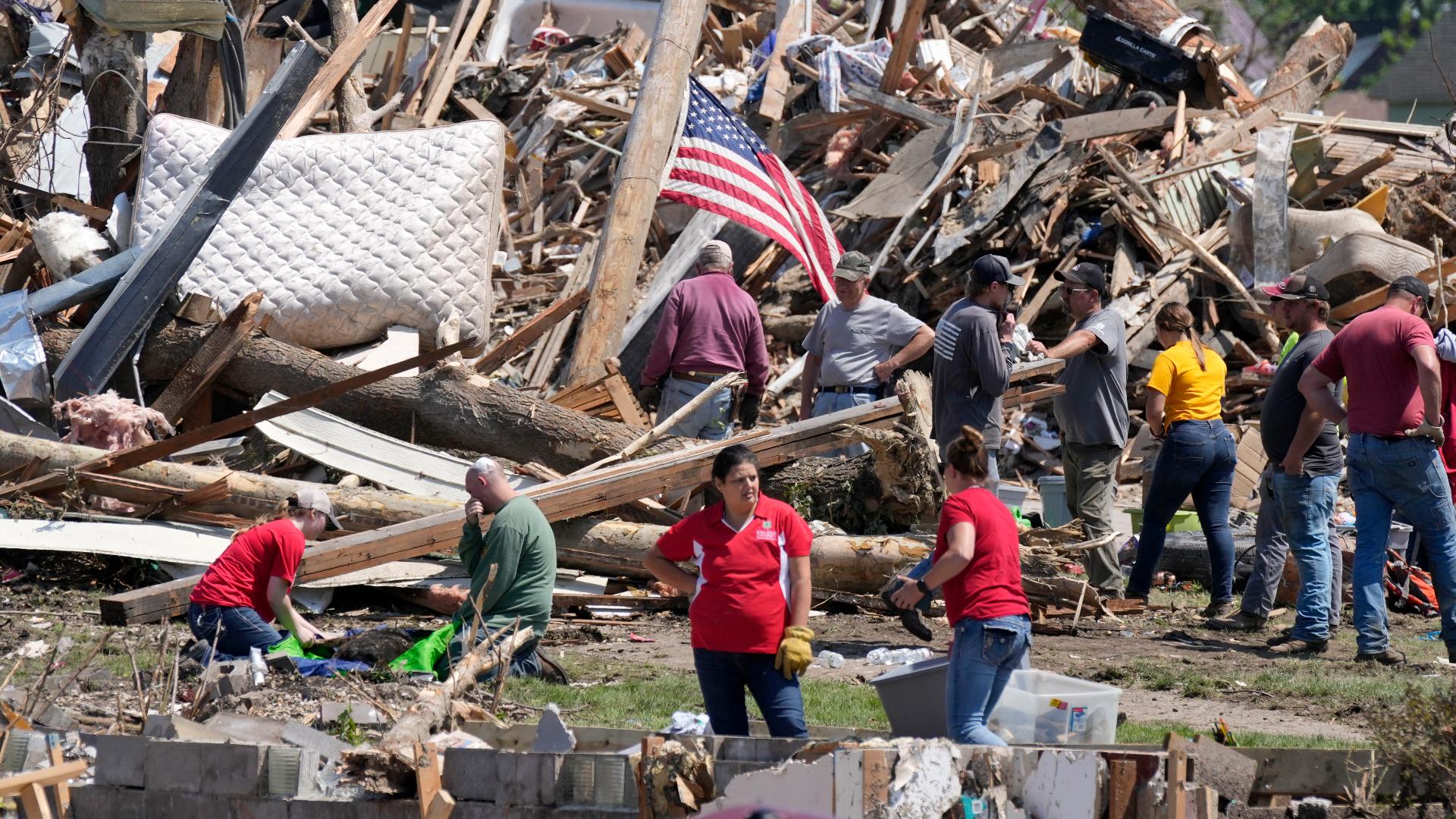The Devastating Impacts of a Greenfield Tornado: Greenfield Tornado Rating

Greenfield tornado rating – Greenfield tornadoes are a particularly destructive force of nature, characterized by their immense wind speeds, wide path widths, and potential to cause catastrophic damage. Unlike other types of tornadoes, Greenfield tornadoes often form in areas without any prior warning, making them especially dangerous and unpredictable.
The wind speeds of Greenfield tornadoes can reach up to 300 miles per hour, giving them the power to uproot trees, demolish buildings, and lift heavy objects into the air. Their path widths can also be exceptionally wide, extending up to a mile across, resulting in widespread devastation.
Historical Examples, Greenfield tornado rating
One of the most devastating Greenfield tornadoes in history occurred in Moore, Oklahoma, in 2013. The tornado had wind speeds of over 200 miles per hour and a path width of more than a mile, causing widespread damage and killing 24 people.
Another notable Greenfield tornado struck Joplin, Missouri, in 2011. This tornado had wind speeds of up to 250 miles per hour and a path width of over half a mile, resulting in the deaths of 161 people and causing billions of dollars in damage.
Understanding the Greenfield Tornado Rating System

The Greenfield Tornado Rating System, also known as the Enhanced Fujita Scale (EF Scale), is a scientific tool used to measure the intensity of tornadoes based on the damage they cause. It was developed by atmospheric scientists in the United States and has become the standard for rating tornadoes worldwide.
The EF Scale is based on a detailed analysis of the damage caused by a tornado, including the type of construction, the degree of damage, and the eyewitness accounts of those who experienced it. Each tornado is assigned an EF rating from 0 to 5, with 5 being the most intense.
Specific Criteria for Assigning an EF Rating
The specific criteria used to assign an EF rating to a Greenfield tornado include:
- Wind speed: The EF Scale uses a range of wind speeds to estimate the intensity of a tornado. Wind speeds are estimated based on the damage caused to structures, vegetation, and other objects.
- Damage patterns: The EF Scale also considers the patterns of damage caused by a tornado. For example, a tornado that causes widespread damage to well-built structures will be assigned a higher EF rating than a tornado that causes similar damage to less sturdy structures.
- Eyewitness accounts: Eyewitness accounts can also be used to help determine the intensity of a tornado. For example, if multiple eyewitnesses report seeing a tornado that was accompanied by a loud roar or that caused a sudden change in atmospheric pressure, this information can be used to support a higher EF rating.
Preparedness and Mitigation Strategies for Greenfield Tornadoes

Preparing for and mitigating the risks associated with Greenfield tornadoes is crucial for the safety of communities. A comprehensive approach that involves developing a family emergency plan, creating a tornado shelter, staying informed about weather forecasts, and implementing property and infrastructure protection measures is essential.
Developing a Family Emergency Plan
Creating a family emergency plan Artikels the actions each family member should take in the event of a tornado warning. This plan should include designated meeting places, evacuation routes, and communication protocols. Regularly reviewing and practicing the plan ensures that everyone knows their roles and responsibilities during a tornado.
Creating a Tornado Shelter
Identifying a safe place to take shelter during a tornado is vital. An interior room on the lowest floor of a building, such as a basement or storm cellar, provides the best protection. Reinforcing the shelter with sturdy materials, such as concrete or cinder blocks, can further enhance its safety.
Staying Informed About Weather Forecasts
Monitoring weather forecasts and warnings is essential for staying prepared for tornadoes. Utilizing weather apps, radio broadcasts, and local emergency alerts provides timely information about approaching storms and potential tornado threats. Staying informed allows individuals to take appropriate actions, such as seeking shelter or evacuating if necessary.
Protecting Property and Infrastructure
Implementing measures to protect property and infrastructure from tornado damage can mitigate the potential for injuries and losses. Reinforcing structures with hurricane straps, installing impact-resistant windows and doors, and planting trees strategically around buildings can help reduce the risk of damage. Additionally, securing loose objects and storing valuables in a safe location can minimize the impact of a tornado.